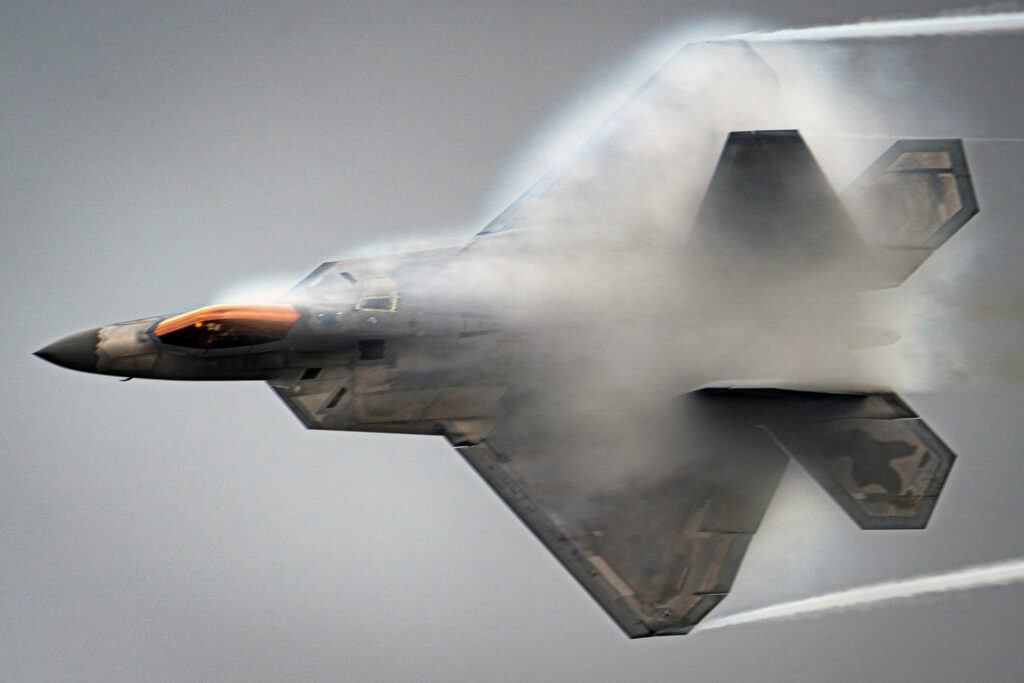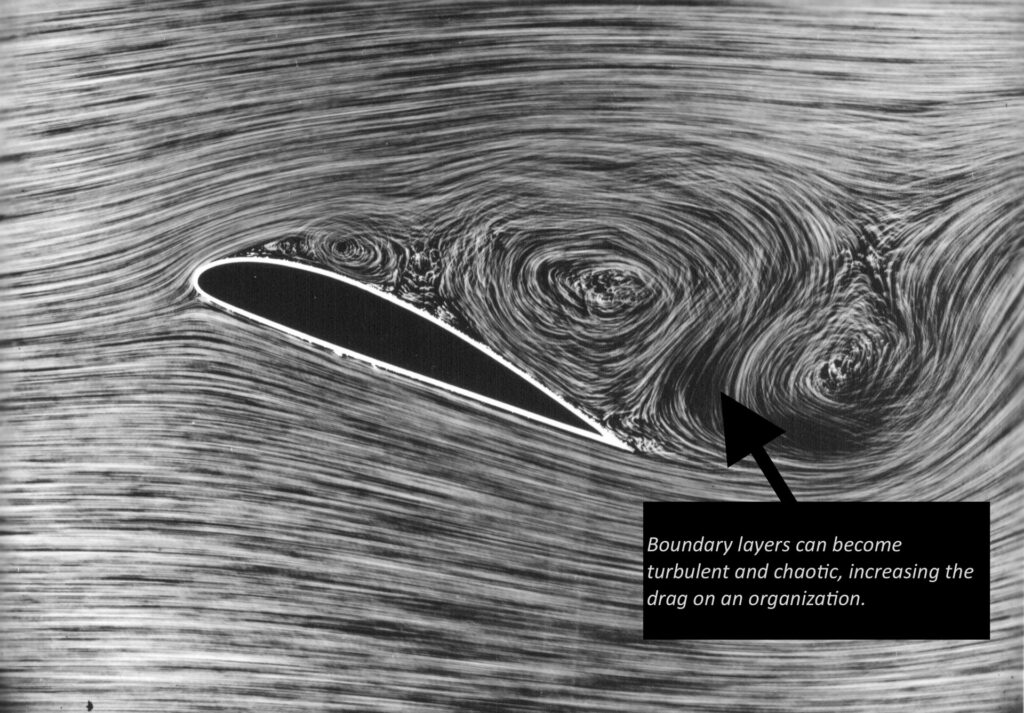
What is a boundary layer?
Disclaimer: We are not an engineering firm, but we think this is an apt metaphor.
In fluid mechanics, a boundary layer is that area of flow immediately closest to the surface of an object. That object can be something like an aircraft wing, the wall of a pipe, a building, or even a mountain. The fluid can be things like air, gas, oil, or water. We’ll use the example of an aircraft wing and the air that passes over it.

Attribution: DLR, CC-BY 3.0, CC BY 3.0 DE <https://creativecommons.org/licenses/by/3.0/de/deed.en>, via Wikimedia Commons.
When the air and the wing first come into contact, the air flow stays “attached” and the wing moves smoothly through the air. Sometimes, though, the boundary layer detaches, becomes much larger, and the flow of the air within that boundary layer becomes turbulent and chaotic – even to the point that the air reverses direction. Generally, that’s bad: drag goes up, lift is lost, and more fuel must be burned by the engines to overcome the retarding force of the drag. Lots of money is spent by companies like Boeing to try to control the boundary layers on the wings of their aircraft so that they will be more efficient.
Organizations of all type have the same problem.
Turbulence and chaos within an organization can occur when boundaries intersect. These boundaries can be cultural, geographic, departmental, and even between individual employees.
Mountains are formed when the boundaries of tectonic plates collide. This happens a lot in mergers and acquisitions. We’ve worked with companies where the merger took place nearly twenty years prior. Two decades later, people were still identifying as “Heritage ABC Company” or “Heritage XYZ Company” – even employees that were hired post-merger found themselves co-opted into one of the competing cultures. Silo mentalities emerge, drag increases, and the anticipated benefits of the merger aren’t achieved.
Aviation is one of the industries where generational boundaries are coming in to conflict. Baby boomers are aging out of the fight, and cultures they helped establish are being overturned by the wave of incoming, Gen X, Millennials/Gen Y, Zoomers/Gen Z, and Generation Alpha.
Wherever there are boundaries, weird things happen.
We’re here to help.
